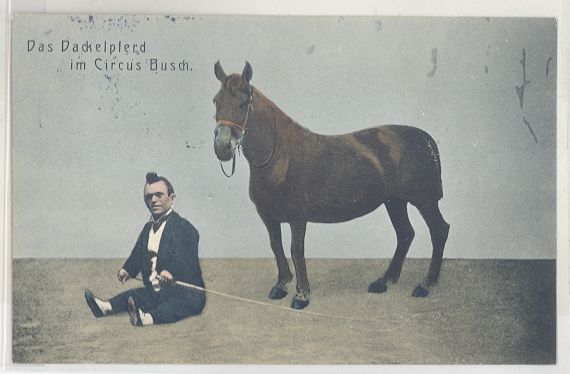|
NPR2
Natriuretic peptide receptor B (''NPR2''), also known as atrionatriuretic peptide receptor B and formerly as guanylate cyclase B, is an atrial natriuretic peptide receptor which in humans is encoded by the ''NPR2'' gene. A mutation in the ''NPR2'' gene can result in achondroplasia and disproportionate dwarfism with short limbs. See also * Atrial natriuretic peptide receptor *Dwarfism Dwarfism is a condition of people and animals marked by unusually small size or short stature. In humans, it is sometimes defined as an adult height of less than , regardless of sex; the average adult height among people with dwarfism is . '' ... References Further reading * * * * * * * * * * * * * * * * * External links * EC 4.6.1 {{membrane-protein-stub ... [...More Info...] [...Related Items...] OR: [Wikipedia] [Google] [Baidu] |
Dwarfism
Dwarfism is a condition of people and animals marked by unusually small size or short stature. In humans, it is sometimes defined as an adult height of less than , regardless of sex; the average adult height among people with dwarfism is . ''Disproportionate dwarfism'' is characterized by either Rhizomelia, short limbs or a short torso. In cases of ''proportionate dwarfism'', both the limbs and torso are unusually small. Intelligence is usually normal, and most people with it have a nearly normal life expectancy. People with dwarfism can usually bear children, although there are additional Pregnancy risks, risks to the mother and child depending upon the underlying condition. The most common and recognizable form of dwarfism in humans (comprising 70% of cases) is achondroplasia, a genetic disorder whereby the limbs are diminutive. Growth hormone deficiency is responsible for most other cases. There are many other less common causes. Treatment of the condition depends on the u ... [...More Info...] [...Related Items...] OR: [Wikipedia] [Google] [Baidu] |
Atrial Natriuretic Peptide Receptor
An atrial natriuretic peptide receptor is a receptor for atrial natriuretic peptide. Mechanism NPRA and NPRB are linked to guanylyl cyclases, while NPRC is G-protein-linked and is a "clearance receptor" that acts to internalise and destroy the ligand. ANP activation of the ANP catalytic receptor will stimulate its intracellular guanylyl cyclase activity to convert GTP to cGMP. cGMP will then stimulate cGMP-dependent protein kinase (PKG), which will then induce smooth muscle relaxation. This is particularly important in the vasculature, where vascular smooth muscle will bind ANP released as a result of increasing right atrial pressure and will cause the walls of the vasculature to relax. This relaxation will decrease total peripheral resistance, which will in turn decrease venous return to the heart. The decrease in venous return to the heart will reduce the preload and will result in the heart's having to do less work. There is also a soluble guanylyl cyclase that canno ... [...More Info...] [...Related Items...] OR: [Wikipedia] [Google] [Baidu] |
Gene
In biology, the word gene has two meanings. The Mendelian gene is a basic unit of heredity. The molecular gene is a sequence of nucleotides in DNA that is transcribed to produce a functional RNA. There are two types of molecular genes: protein-coding genes and non-coding genes. During gene expression (the synthesis of Gene product, RNA or protein from a gene), DNA is first transcription (biology), copied into RNA. RNA can be non-coding RNA, directly functional or be the intermediate protein biosynthesis, template for the synthesis of a protein. The transmission of genes to an organism's offspring, is the basis of the inheritance of phenotypic traits from one generation to the next. These genes make up different DNA sequences, together called a genotype, that is specific to every given individual, within the gene pool of the population (biology), population of a given species. The genotype, along with environmental and developmental factors, ultimately determines the phenotype ... [...More Info...] [...Related Items...] OR: [Wikipedia] [Google] [Baidu] |
Gene Mutation
In biology, a mutation is an alteration in the nucleic acid sequence of the genome of an organism, virus, or extrachromosomal DNA. Viral genomes contain either DNA or RNA. Mutations result from errors during DNA or viral replication, mitosis, or meiosis or other types of damage to DNA (such as pyrimidine dimers caused by exposure to ultraviolet radiation), which then may undergo error-prone repair (especially microhomology-mediated end joining), cause an error during other forms of repair, or cause an error during replication ( translesion synthesis). Mutations may also result from substitution, insertion or deletion of segments of DNA due to mobile genetic elements. Mutations may or may not produce detectable changes in the observable characteristics (phenotype) of an organism. Mutations play a part in both normal and abnormal biological processes including: evolution, cancer, and the development of the immune system, including junctional diversity. Mutation is the ult ... [...More Info...] [...Related Items...] OR: [Wikipedia] [Google] [Baidu] |
Achondroplasia
Achondroplasia is a genetic disorder with an autosomal dominant pattern of inheritance whose primary feature is dwarfism. It is the most common cause of dwarfism and affects about 1 in 27,500 people. In those with the condition, the Rhizomelia, arms and legs are short, while the torso is typically of normal length. Those affected have an average adult height of for males and for females. Other features can include an Macrocephaly, enlarged head with Skull bossing, prominent forehead (frontal bossing) and underdevelopment of the midface (midface hypoplasia). Complications can include sleep apnea or recurrent ear infections. Achondroplasia includes the extremely rare short-limb skeletal dysplasia with severe combined immunodeficiency. Achondroplasia is caused by a mutation in the fibroblast growth factor receptor 3 (''FGFR3'') gene that results in its protein being Gain-of-function, overactive. Achondroplasia results in impaired endochondral bone growth (bone growth within car ... [...More Info...] [...Related Items...] OR: [Wikipedia] [Google] [Baidu] |
